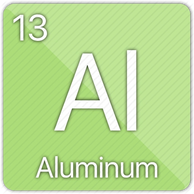Signed in as:
filler@godaddy.com
Signed in as:
filler@godaddy.com
Here are some examples of the type of wear debris found during oil analysis.

Indicates the total ferrous metal contents of the oil. The PQ Index ranged from 1 to 9999 with the highest number showing a high metal content.

Valued for its high strength to weight ratio and excellent corrosion resistance.
Alloyed with other elements to improve wear and temperature resistance.


Used as an engineering material for its great hardness and corrosion resistance.
Often found in systems operating under harsh conditions.


Widely used as an alloying element, prized for its material properties – very ductile, and excellent thermal and electrical conductivity.
Heavily used in bearing systems, as well as heat exchangers.


Most common wear metal and found in virtually all equipment.
Metallurgy of component can determine source of debris i.e. cast iron bolts vs stainless steel lube oil piping.

Formerly used as an octane-boosting additive in gasoline prior to introduction of catalytic converters.
Soft metal used for sacrificial wear surfaces such as journal bearings.
Lead based babbitts are widely used.

Sometimes used in certain steel alloys with virtually no other uses.

Not widely used anymore but can be found in certain alloys of steel for internal engine parts.
Also used as a coating on bearings

Has exceptional thermal conductivity and is an excellent bearing plate material, providing minimal friction.
Susceptible to corrosion from zinc-based additives.

Used as an alloying element with copper and lead for sacrificial bearing liners.

Anti-wear additive – chemically binds to wear surfaces creating a hard Titanium based oxide layer reducing friction.


Fuel Contamination from crude oil.
Can also be an alloying element for steel.

Used for alloying element for bearings, thrust washers and galvanized cases.
Copyright © 2020 Machine Diagnostics Ltd - All Rights Reserved.
This website uses cookies. By continuing to use this site, you accept our use of cookies.